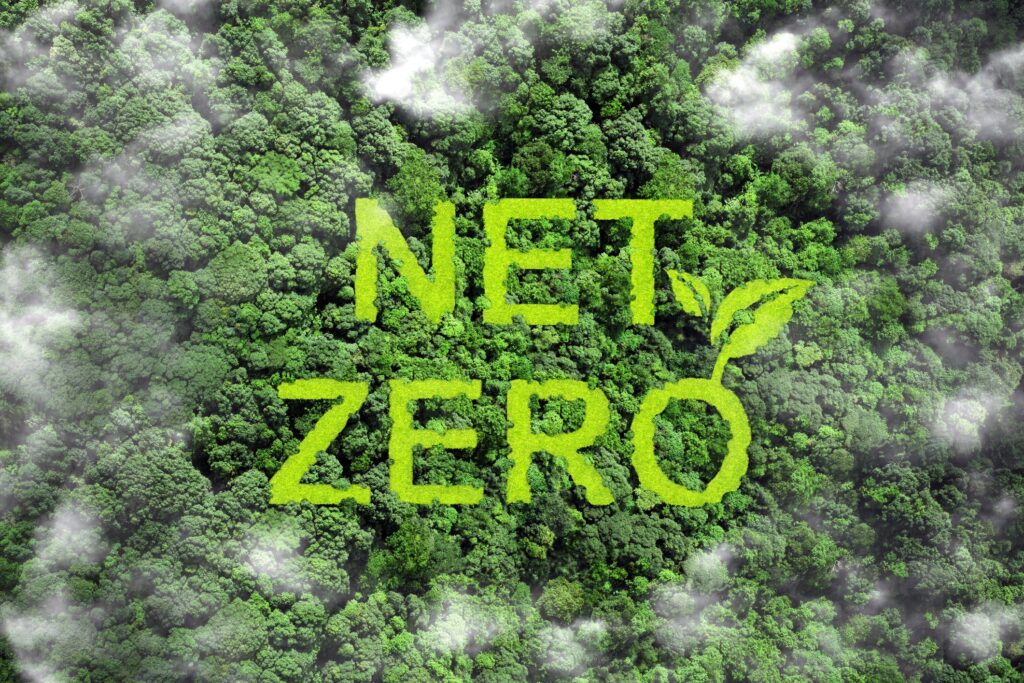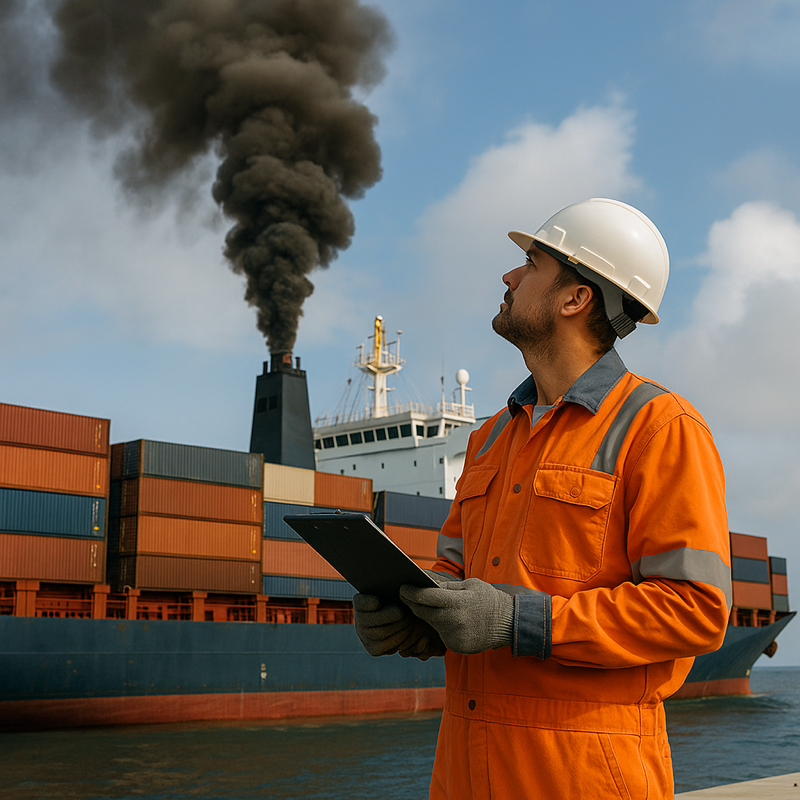As the world becomes more aware of the impact of carbon emissions on the environment, companies are increasingly turning to carbon offsetting and insetting strategies to reduce their supply chain carbon footprint, particularly in logistics and shipping. However, companies must first measure and understand their Scope 3 emissions to make informed decisions on the best strategies to reduce emissions throughout the value chain.
Accurate measurement of carbon emissions can be achieved through technology solutions that provide granular-level data on transportation and logistics operations. Companies can use this data to optimize routes, shipment sizes, and modes of transportation to reduce emissions while still meeting customer demand.
To achieve net zero emissions, companies must first reduce emissions through insetting efforts and second, offset what cannot be reduced through carbon offset projects. By investing in sustainable practices, companies can make significant progress in reducing their carbon footprint.
Carbon Offset Examples
Carbon offsets are a way for companies to compensate for their carbon emissions by supporting projects that remove or reduce carbon dioxide (CO2) from the atmosphere. This process involves purchasing carbon credits from organizations that carry out projects like reforestation or renewable energy initiatives. These projects must meet strict standards to confirm they are reducing carbon emissions and positively impacting the environment. Here are four types of carbon credit projects.
Forestry and Conservation – The process of photosynthesis decreases CO2 in the atmosphere, making the protection and restoration of forests and other ecosystems a popular type of carbon offset project.
Renewable Energy – This type of project replaces energy generated from fossil fuels, a major source of greenhouse gas emissions, with energy from renewable sources, like solar, wind, and hydropower.
Community Projects – This type of project aims to empower communities by equipping them with the resources for a reduced carbon footprint. Examples include energy efficiency initiatives or sustainable transportation programs.
Waste-to-Energy – Methane gas is released into the atmosphere by landfills and specific activities like wastewater treatment. Waste-to-energy projects can capture and burn methane to make it less harmful to the environment or use it to produce electricity.
Carbon Insetting vs. Offsetting
As mentioned, carbon insetting is the other piece of the sustainability puzzle. Carbon insetting is the strategy of reducing carbon emissions within a company’s own activities and value chain. It allows companies to take direct action to improve their carbon footprint internally, rather than simply paying for external projects while maintaining irresponsible practices. This approach can also result in cost savings and increased efficiency, as companies optimize their processes to reduce waste and emissions.
The main challenge of carbon insetting is the potential difficulty in accurately measuring and reporting on emissions reductions. In contrast, carbon offset projects have already been certified for a specific reduction of emissions. However, insetting is an effective and necessary strategy for companies integrating sustainability into their business operations. Combining carbon insetting and offsetting makes a comprehensive approach to reducing carbon emissions and combating climate change.
Limitations of Carbon Offsets
Since carbon offsets do not reduce a company’s internal carbon footprint, they do not address the core issue of producing emissions in the first place. Carbon offsets only address emissions after they have been created, rather than reducing emissions at the source. There are some concerns about the effectiveness of offset projects, which can vary widely depending on the project type and location.
For an offset project to be effective, it must be permanent and additional to what would have occurred had the project not been funded. To qualify, the drive behind the entire project must be to sell carbon credits, not to comply with regulations or earn another kind of benefit. Projects must also be seen through to completion to realize the full potential of the offsetting.
Another concern with carbon offsetting is that it can lead to an imbalance between resource-rich and resource-limited countries in their action toward reducing carbon emissions. What should not happen is resource-rich countries essentially paying resource-limited countries to take action for them rather than reducing their own emissions.
Carbon offset effectiveness rates are another concern, making it essential to consider project duration and completion to ensure that carbon offsets are fully realized. Even if effectiveness was not an issue, another weakness of relying on these projects is the simple fact of the limited availability of offsets. It is impossible to address the entirety of global carbon emissions through offsetting alone.
Yet, despite these concerns, offsetting is still a crucial part of sustainability, and companies should thoroughly research and carefully choose the offset projects they invest in, while also prioritizing the reduction of emissions at the source.
Steps to Selecting the Right Carbon Offset for Your Company
When choosing a carbon offset project, it is vital to consider the effectiveness of the offset. The type of project matters, from forestry to waste-to-energy projects, as does the project’s location. For example, offsetting emissions from a manufacturing facility in the U.S. by supporting a forestry project in Brazil may have a greater impact than supporting a renewable energy project in the U.S.
Certification is another crucial factor to consider when choosing a carbon offset. Certifications like the Verified Carbon Standard and the Gold Standard provide assurance that the offset project meets rigorous standards for additionality, permanence, and other factors. A trusted platform can provide companies access to certified offsets, ensuring the effectiveness and legitimacy of each project.
Greenabl’s Approach to Decarbonization
Greenabl is committed to providing a comprehensive solution to reduce the carbon footprint of shipping and logistics operations. To achieve this, Greenabl addresses two essential pieces: carbon offsets and accurate emissions measurements for insetting.
Through Cloverly, Greenabl connects companies to quality carbon offset projects, ranging from reforestation efforts to installing renewable energy sources. By investing in these projects, companies can offset their unavoidable carbon emissions, bringing their carbon footprint down to net zero.
At the same time, Greenabl partners with Searoutes to provide accurate and precise emissions measurements. By analyzing granular data on shipping routes, modes of transportation, and fuel efficiency, companies gain a detailed understanding of their Scope 3 emissions. This allows them to identify opportunities to reduce emissions through carbon insetting. Companies can reduce their carbon footprint at the source by optimizing transportation routes or using sustainable packaging.
Greenabl’s approach addresses both the opportunities for carbon insetting and the unavoidable emissions that a trusted, verified project must offset. This approach ensures that companies are taking meaningful action to reduce their carbon footprints and improve their sustainability.
The Importance of Accurate and Precise Carbon Emissions Measurements
As for carbon insetting, the biggest difficulty for companies often comes from the challenges of ensuring accurate and precise carbon emissions measurements, particularly for Scope 3 emissions. Scope 3 emissions are a challenge compared to Scopes 1 and 2 not only because most companies have a majority of their emissions coming from Scope 3 but also because they are indirect emissions which they have less transparency into.
Scope 1 emissions are direct emissions from sources owned or controlled by a company. Scope 2 emissions are indirect, like Scope 3; however, they are specifically from purchasing electricity, heat, cooling, or steam, and there are straightforward methods for measuring these emissions.
Scope 3 emissions, however, tend to be the most complex. Scope 3 emissions are indirect emissions from a company’s value chain. This includes the purchase of goods and services, logistics, and shipping when another company owns the process. The difficulty is the Scope 3 category can consist of a mixed assortment of data, making it a challenge to measure and control, particularly in activities like shipping. Even with the many different sources of emissions companies are dealing with, from different modes of shipping to different transportation providers, they must ensure all their data is accurate and precise to avoid the mistake of comparing apples to oranges when they get into reporting and decision-making.
Greenabl works with Searoutes to provide this quality of emissions measurement and reporting. They provide data on shipping lanes, port pair emissions, and more to allow procurement managers to make informed decisions and select greener shipping options.
Achieve Supply Chain and Shipping Sustainability with Greenabl
Achieving carbon neutrality requires a comprehensive approach that tackles all scopes of emissions, including those from shipping and logistics. Carbon offsets are a vital tool in this effort, but companies must use them in conjunction with other mitigation strategies to achieve meaningful results.
Greenabl helps companies combine strategies of offsetting through Cloverly and precise emissions measurements for insetting through Searoutes, to reduce the overall carbon footprint. By working with a trusted partner like Greenabl, companies can make their supply chain and shipping processes more sustainable, with a greener environmental impact. To learn more, reach out to Greenabl today.


